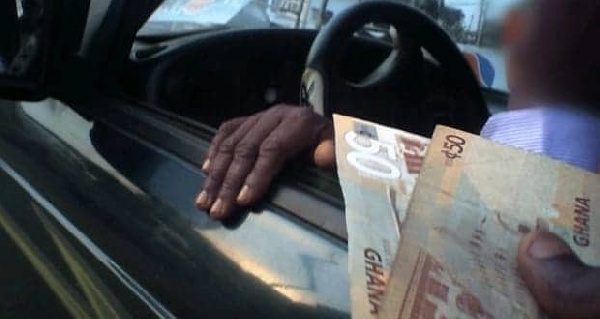Prevalence of bribery highest among police officers – Report
The report titled, ‘Corruption in Ghana: Peoples experiences and views’ launched yesterday, July 20, 2022, was co-produced by the Commission on Human Rights and Administrative Justice (CHRAJ), the Ghana Statistical Service, and with support from the United Nations Office on Drugs and Crime (UNODC).

Police officers have been found to be the highest takers of bribes in a latest survey on corruption by the Ghana Statistical Service, and other institutions.
The survey ranked police service officers at 53 per cent, followed by Ghana Immigration Service officers at 37.4 per cent and Ghana Revenue Authority (GRA) Customs Officers at 3.6 per cent.
“When comparing the contact and bribery prevalence rates, it becomes evident that although only one fifth of adults had contact with police officers in the 12 months prior to the survey, around half of them had to pay a bribe to, or were asked to pay a bribe by, a police officer. This in stark contrast with health care officials in public hospitals and clinics, in relation to whom, despite a high contact rate (60.2 per cent), the prevalence of bribery is comparatively low, at 7.9 per cent,” the report stated.
The report titled, ‘Corruption in Ghana: Peoples experiences and views’ launched yesterday, July 20, 2022, was co-produced by the Commission on Human Rights and Administrative Justice (CHRAJ), the Ghana Statistical Service, and with support from the United Nations Office on Drugs and Crime (UNODC).
According to the authors of the report, the survey is the first comprehensive, nationally representative population survey on corruption in Ghana. The fieldwork involved a survey of 15,000 respondents across the country, in all regions and in both urban and rural areas.
Additionally, the report found that in all 16 regions, police officers were among the top three public officials in relation to whom the prevalence of bribery was highest.
In rural areas, for instance, the prevalence of bribery in relation to police officers was highest, at 61.3 per cent than in urban areas (48.0 per cent).
Although the report found the police to have received the highest bribes paid in cash (at 96.9 per cent), it noted that there were large variations in the size of bribes according to the type of public official who received them. Police officers and health workers received much smaller average amounts, around Ghc 220 and up to Ghc 253 respectively, which was in contrast to Lands Commission Officers, and Prosecutors, judges or magistrates who are said to receive average large amounts of Ghc 1,208 to Ghc 1,669.
“These disparities suggest very different dynamics in the payment of bribes, depending on the public official on the receiving end of those payments. It is notable that the largest average bribes are paid to public officials with whom most citizens have little contact in their daily lives. This may suggest that large bribes, although relatively rare, are generally paid to influence important decisions by public officials, which can have substantial economic or personal consequences (for example, by influencing land-related decisions, immigration matters, or prosecutors and judges).
Conversely, the dynamics behind smaller bribes seem to be related to public officials with whom people have more frequent contact (such as police officers, and health care workers, public utility officials) as well as to bribes that are paid to avoid moderate fines or sanctions, to maintain utility connections or to reduce tax payments,” the report noted.


